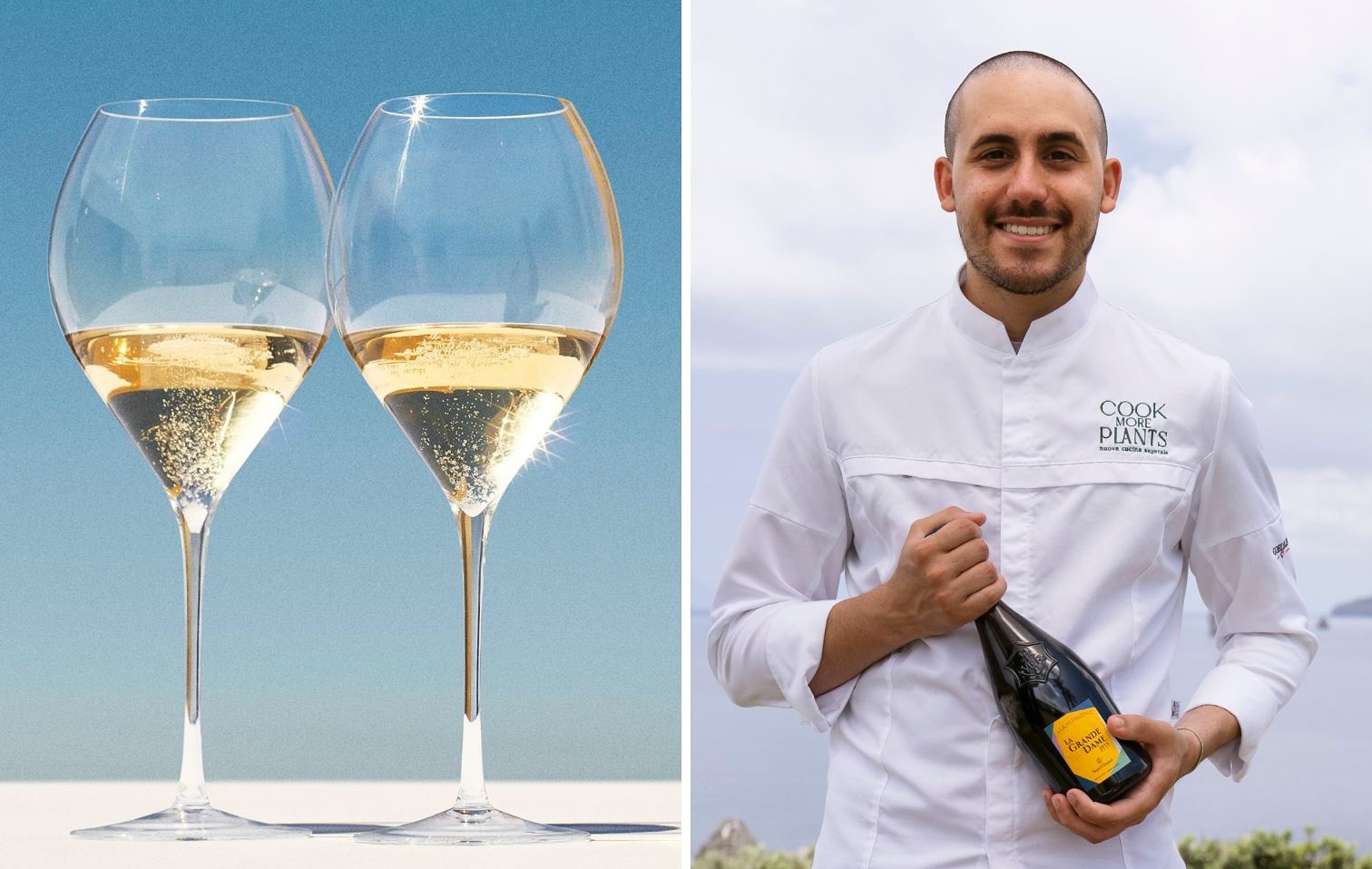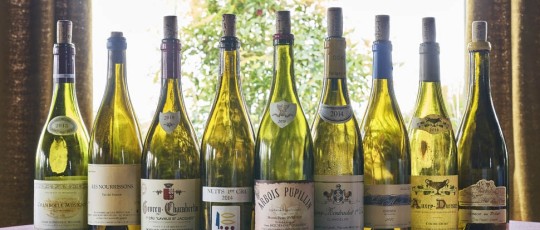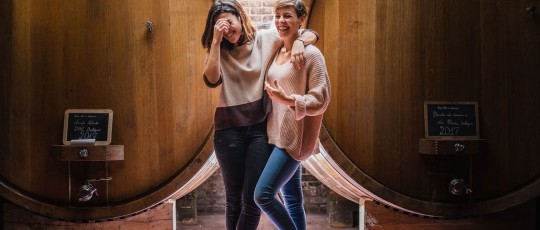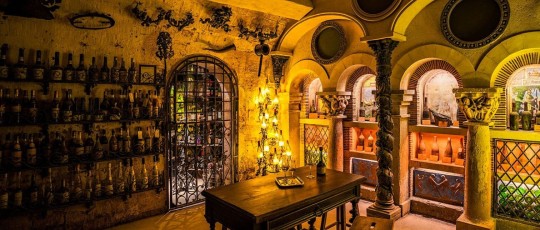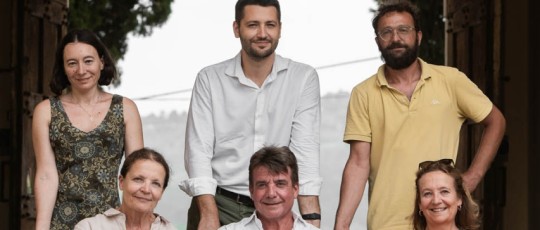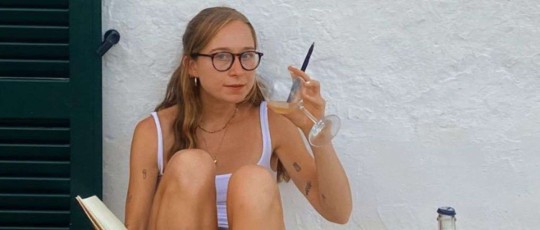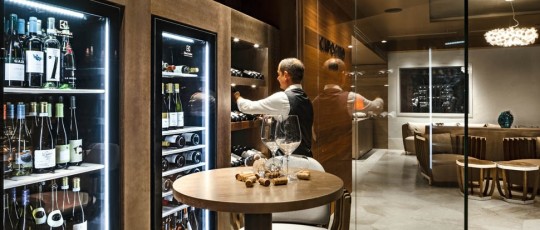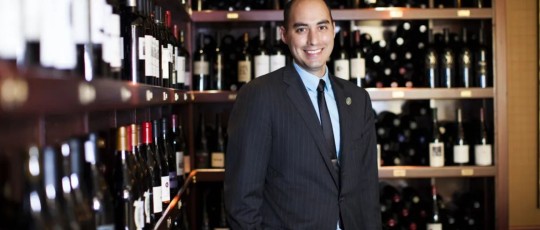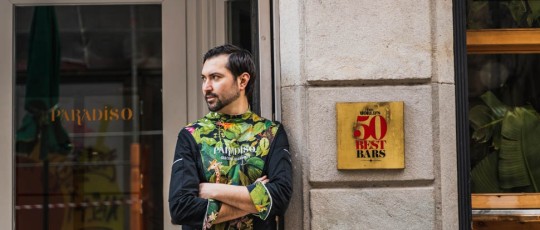Sophistication and subtlety in a wine structured around minerality, rich in nuances on the nose and palate: La Grande Dame 2015 conquers gourmet tables paired with recipes from renowned chefs. From history to packaging, to pairing with the dishes of Davide Guidara and Alberto Toè, here's its "profile."
A prestigious Champagne House, besides always having a long history to tell, plus a brilliant tradition that shields it from the passage of time, making it unique, is a subject with extraordinary charm. Veuve Clicquot is no exception, with Madame Barbe-Nicole Ponsardin, an extraordinary woman who, in the not-so-easy era for women's emancipation like the 19th century, becomes a widow at twenty-seven and begins, as an entrepreneur, to manage her late husband's business.

And she doesn't stand still because she initiates initiatives that shake up the Champagne world: the first Vintage in 1810 is her idea, as well as the table de remuage six years later, and two years after that, the first Rosé by blending; and then the design of the Maubeuge, a bottle still used today by many other Houses. In our times, the Reims house collaborates with prestigious partnerships with international designers and artists, as seen in the pairing between the new 2015 vintage of La Grande Dame and Paola Paronetto. In her ceramic workshop in Porcia, in the province of Pordenone, she works with paper clay, a technique that involves adding cellulose and plant fibers to the mixture before firing, creating creations that are halfway between sculptures and functional objects.

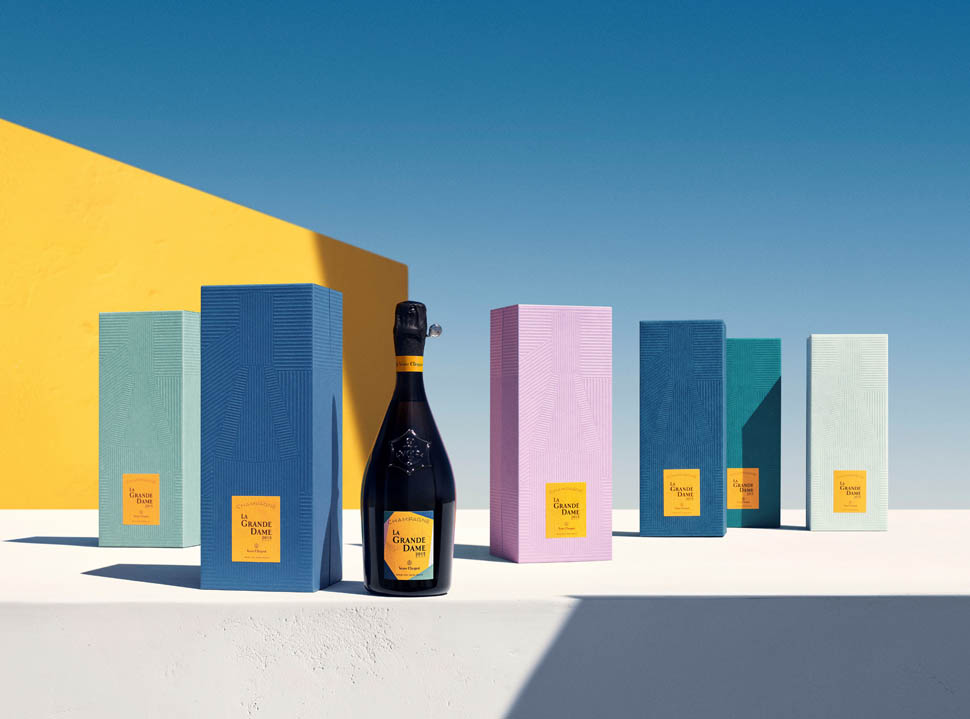
A color master, the ceramist has created for the House a collection of six coffrets, with a range of colors taken from her extensive palette, expressing emotions, joy, and optimism. The same artist has conceived a limited edition sculptural composition of three Giant bottles, each unique in size and colors, with subtle differences in height and finishes: "In all my works, I seek the balance between joy and creativity. My connection with nature pushes me to always look towards a better future. For this new edition of La Grande Dame, I wanted to experiment with a mix of six shades and create a graphical play of light that highlights them." The works are accompanied by an exclusive collection, one of a kind, of Vintage La Grande Dame.
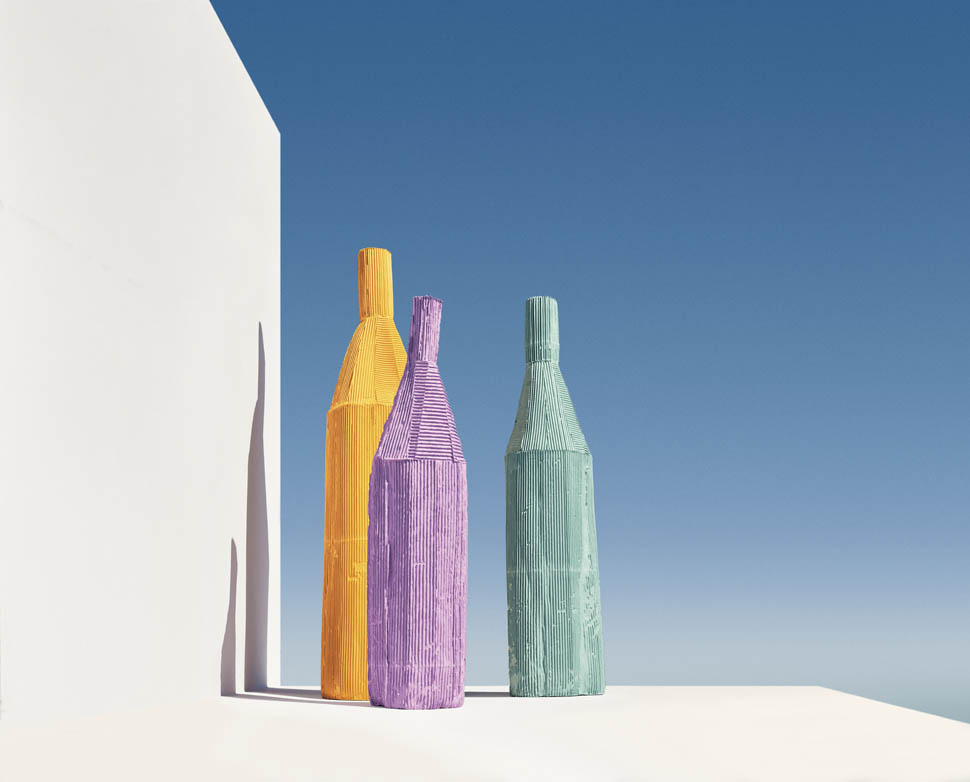
La Grande Dame 2015: elegance in the glass
Turning to the new edition of La Grande Dame in 2015, whose name is inspired by the nickname of Madame Clicquot, "La Grande Dame de la Champagne," it is the twenty-fourth Vintage since 1972 when the brand introduced its first Cuvée de Prestige to celebrate the bicentennial of the Maison.
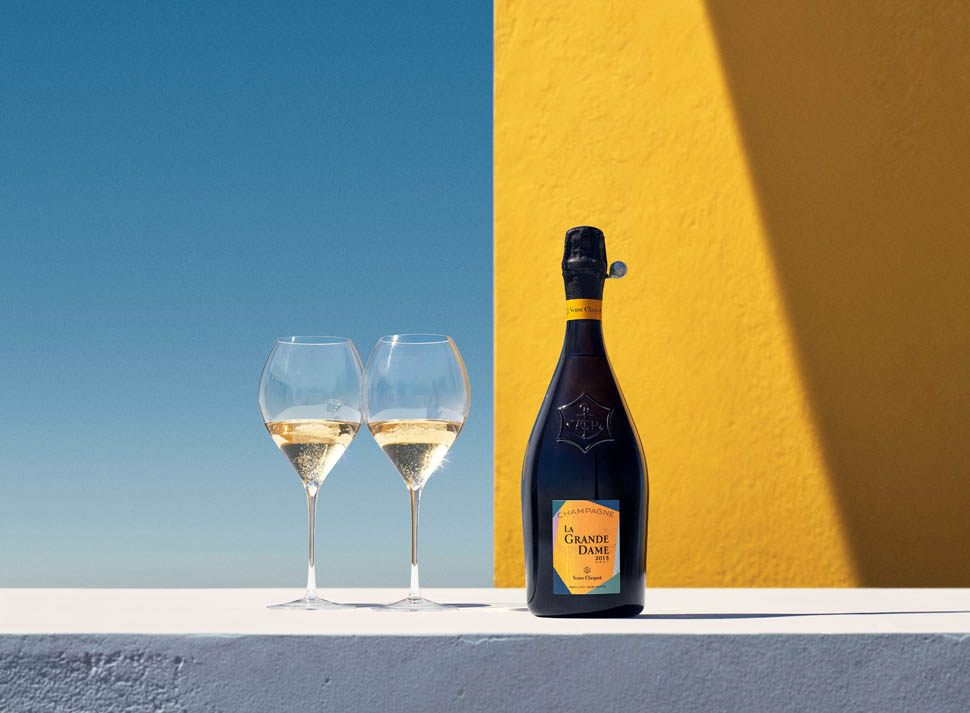
The essence of the great French Maison is Pinot Noir: from 2008, the first Vintage with 92% of this grape from the historic vineyards of Aÿ in the Grande Vallée de la Marne, Verzenay, Verzy, Ambonnay, and Bouzy in the Montagne de Reims, it is further emphasized in the expression of La Grande Dame. From then on, each vintage will contain at least 90% of it. The remaining 10% comes from the Grands Crus of Chardonnay from Avize and Mesnil-Sur-Oger in the Côte des Blancs.
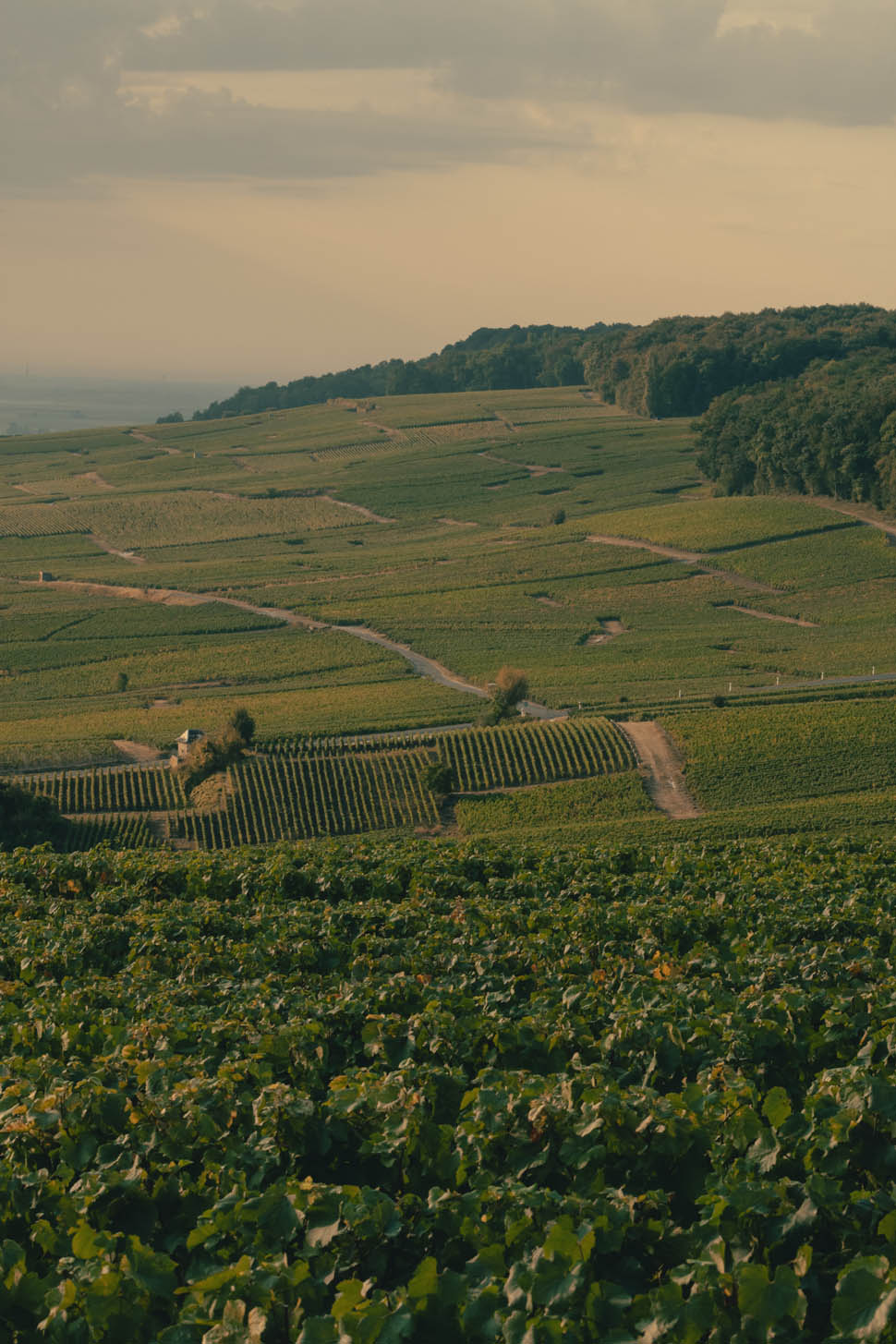
As Didier Mariotti, Chef de Caves, told us a few years ago during a tasting, "when we talk about Grande Dame, we refer to a person who attracts attention for her elegance. Because, when you build vertically, you give the wine time to transform slowly, achieving complexity while maintaining finesse. Usually, when we talk about Pinot Noir in Champagne, it is said to be a very powerful grape, but I don't entirely agree with this description. Part of my family comes from Burgundy, and for me, it represents more elegance and finesse than power."
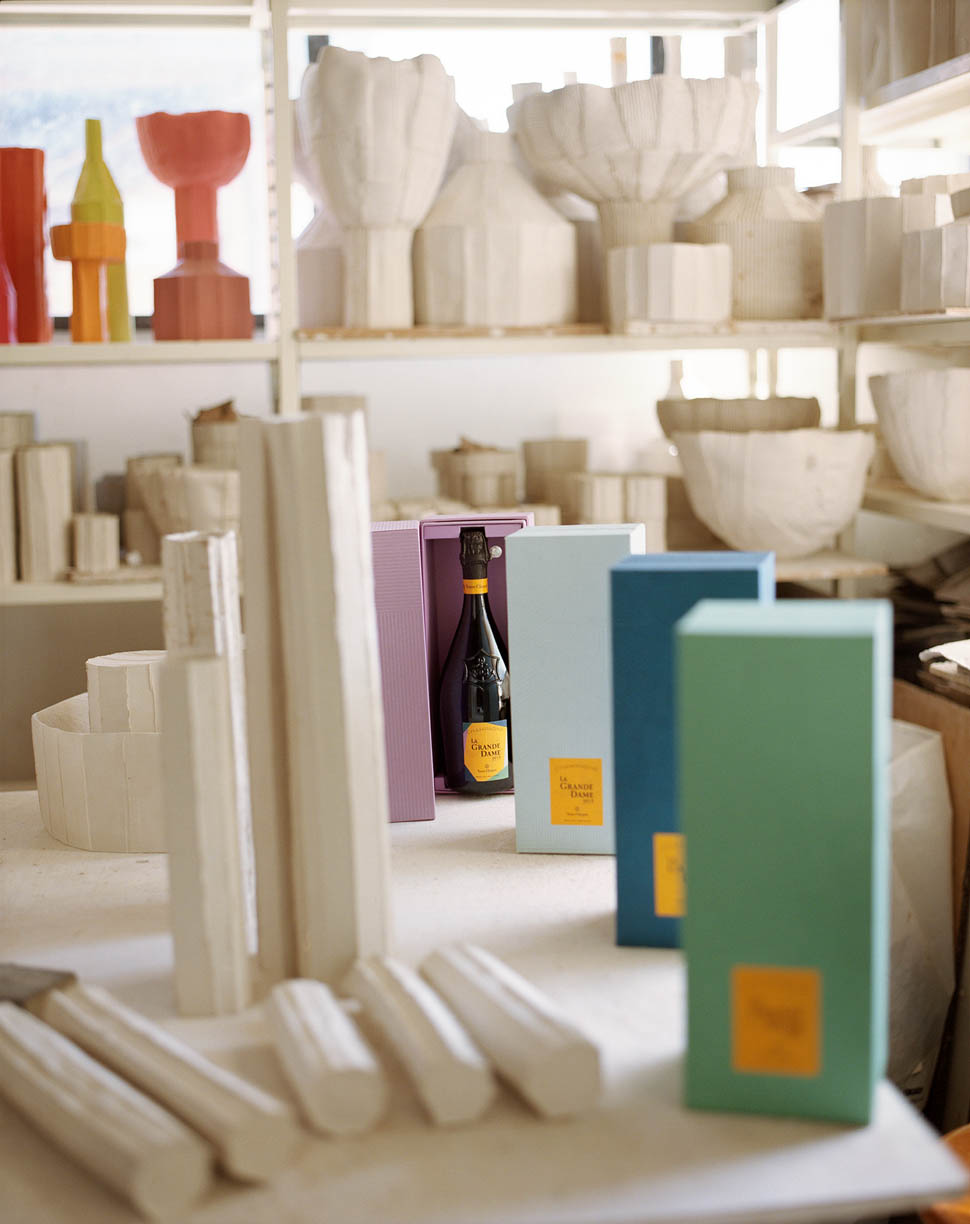
For Mariotti, the reserve wines are crucial, and the Maison has the largest collection in Champagne: "After the harvest, we vinify all the grapes and Crus separately, and after tasting each sample, we select those with the potential to be part of the reserve wines. All are separated by Cru, grape variety, and vintage." He adds, "To build a Champagne like this, you start with vertical structure, where reserve wines are fundamental. The structure can come from acidity or even bitter notes, especially those from the northern mountain Pinot Noir; the bitter notes are interesting and important to me because they are noticed on the palate, but only at the end. I see the wine a bit like a plant; it must rise to seek the energy of the sun: once it has done that, you can build a structure around minerality. If we don't have this framework, this backbone, the wine doesn't hold up."
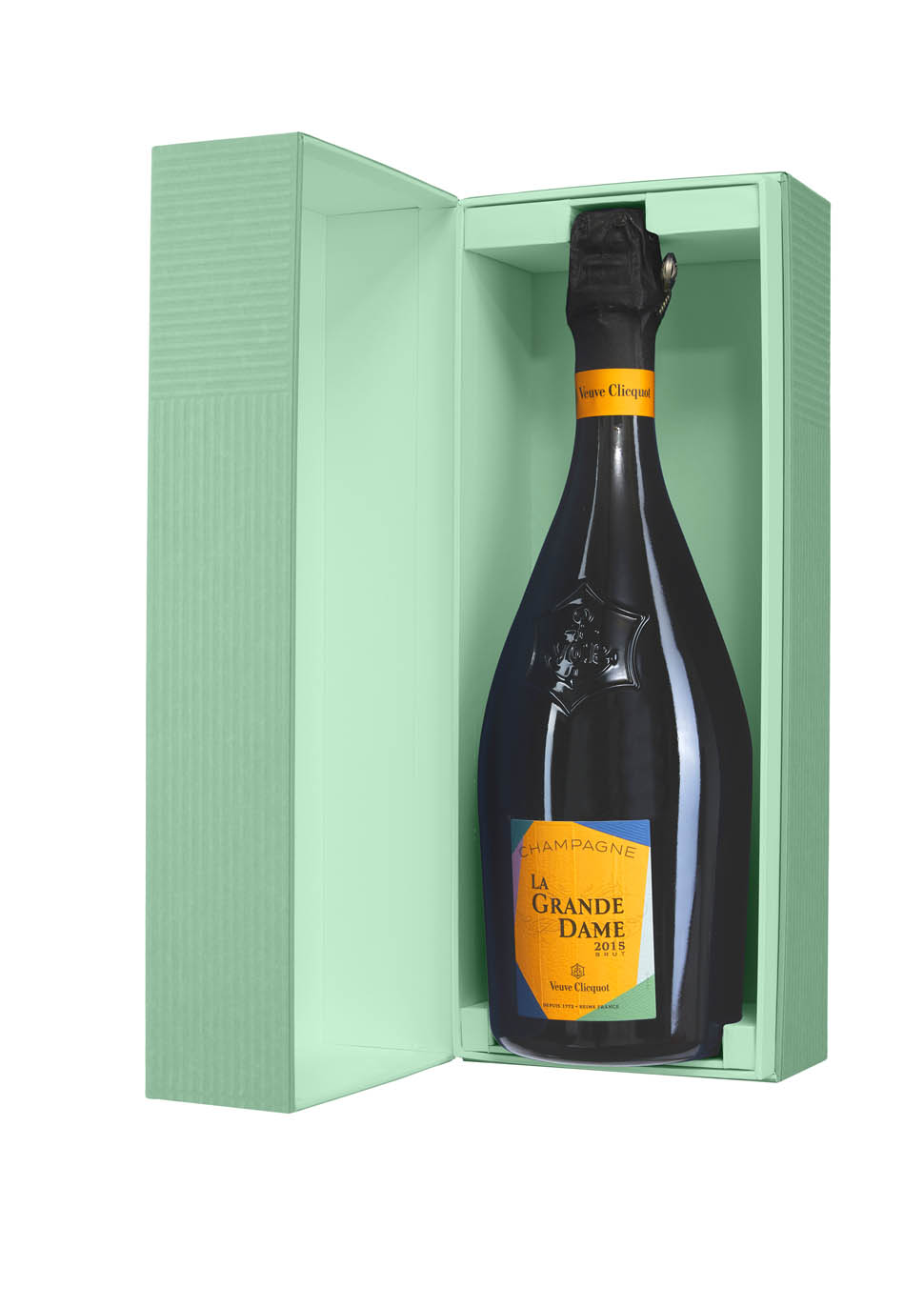
The 2015 harvest was remarkable, with low rainfall, sunny days, and wines of concentration and structure. La Grande Dame 2015 naturally follows the now classic predominant presence of Pinot Noir, at 90%, along with 10% Chardonnay, with a dosage of 6 grams per liter. Olfactorily, it presents itself as a wine particularly rich in nuances, from floral notes of acacia, lilac, and jasmine to white fruits like Granny Smith apple and pear, to citrusy notes of grapefruit, clementine, and lemon zest. On the palate, this Champagne is tense, precise, extremely elegant, with fresh notes of white pepper, ginger, and citrus zest. To reinforce its backbone, there are mineral hints of chalk and stone. It goes without saying that the life ahead for this wine is still very long, just as Madame Clicquot affirmed: "Our black grapes give the most refined white wines."
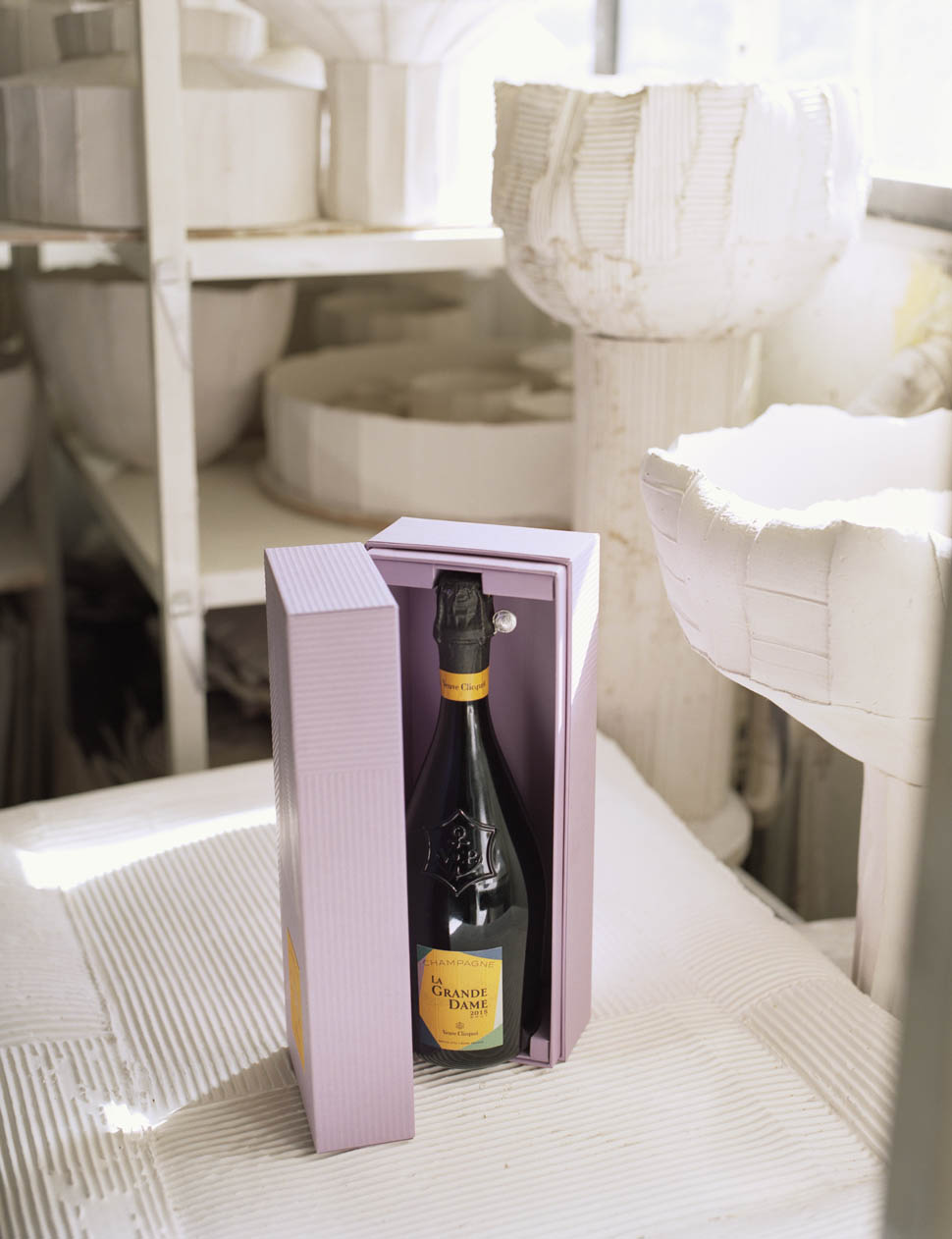
Pairing with the signature dishes of renowned Michelin-starred chefs
It's only natural that a symbolic wine like this would be paired with recipes of equal finesse, tied to the Garden Gastronomy project, a concept of fine cuisine inspired by the excellence of La Grande Dame and based on biodiversity and respect for nature. Here, seasonal vegetables and fruits take center stage on the plate, without excluding meats and fish. The gastronomic garden in Verzy, in the heart of the historic vineyard of the Maison, perfectly symbolizes the philosophy of Garden Gastronomy.
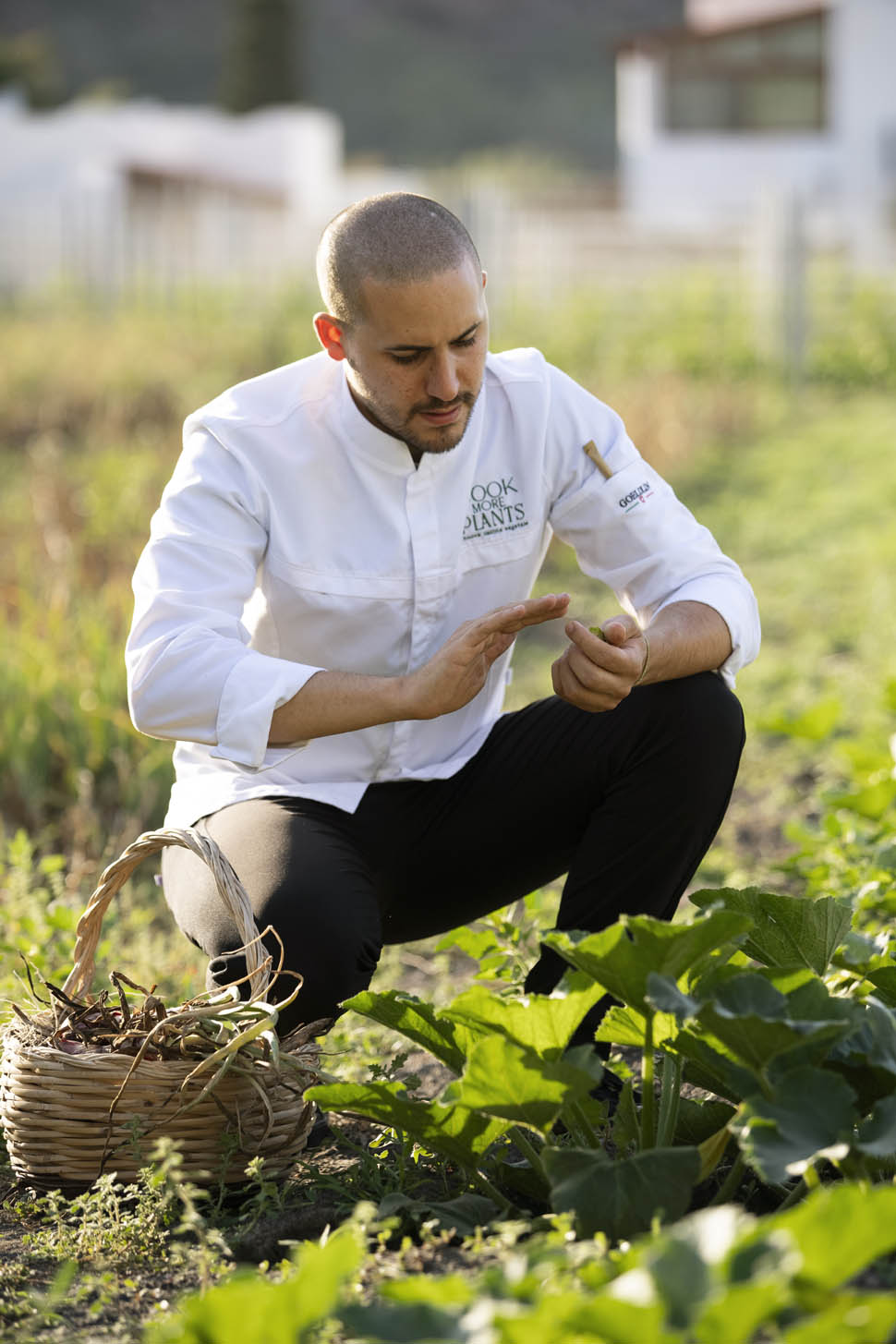
In an area of over 2,500 square meters, more than four hundred varieties of vegetables, herbs, and plants are cultivated using permaculture. Many chefs worldwide have been involved in this vision, including two young and highly successful figures in Italian gastronomy, both honored with Michelin stars and green stars, Alberto Toè and Davide Guidara.
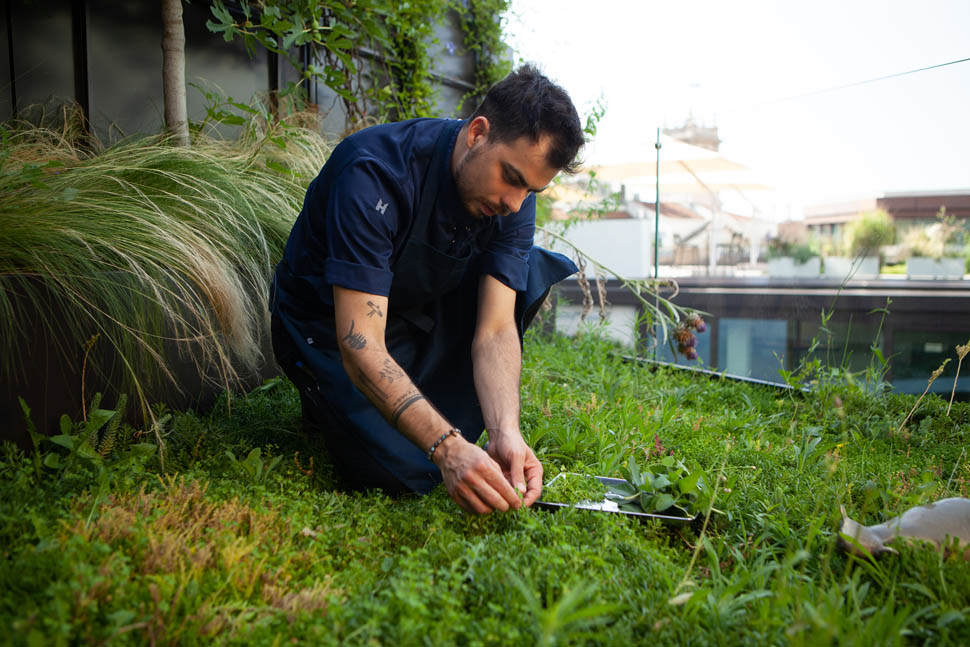
Alberto Toè of Horto in Milan, who grew up in the countryside in the province of Treviso, explains, "The raw materials found in the garden have always been the starting point for every creation of mine. Today, I bring that same inspiration to the dishes at Horto, evolving it into palate surprises that blend tradition and innovation, Italian essence and international influences, simplicity, and complexity. Garden Gastronomy, for me, is a respectful and, above all, curious relationship with the natural world around us. Recognizing how rare and precious the gifts of nature are, Horto's cuisine puts into practice our philosophy of Ethical Now: a model that values the local with a short supply chain and proposes a new synergy between cuisine and territory based on mutual knowledge and respect. Our dishes use only strictly seasonal and local raw materials, specifically sourced from within an hour of the center of Milan, rediscovering the many - and often hidden - treasures of Lombardy. Ours is a proposal of high cuisine, 100% no waste, placing respect for nature, its timing, and its excellent products at the center, discovering its grandeur even in the simplest elements." The recipe offered by Alberto Toè for the international Summit organized by the Maison to pair with La Grande Dame 2015 is trout risotto with crème fraîche and nettles, "for its strength and finesse, its savory mouthfeel, and the delicately acidic touch reminiscent of lemon and flint."
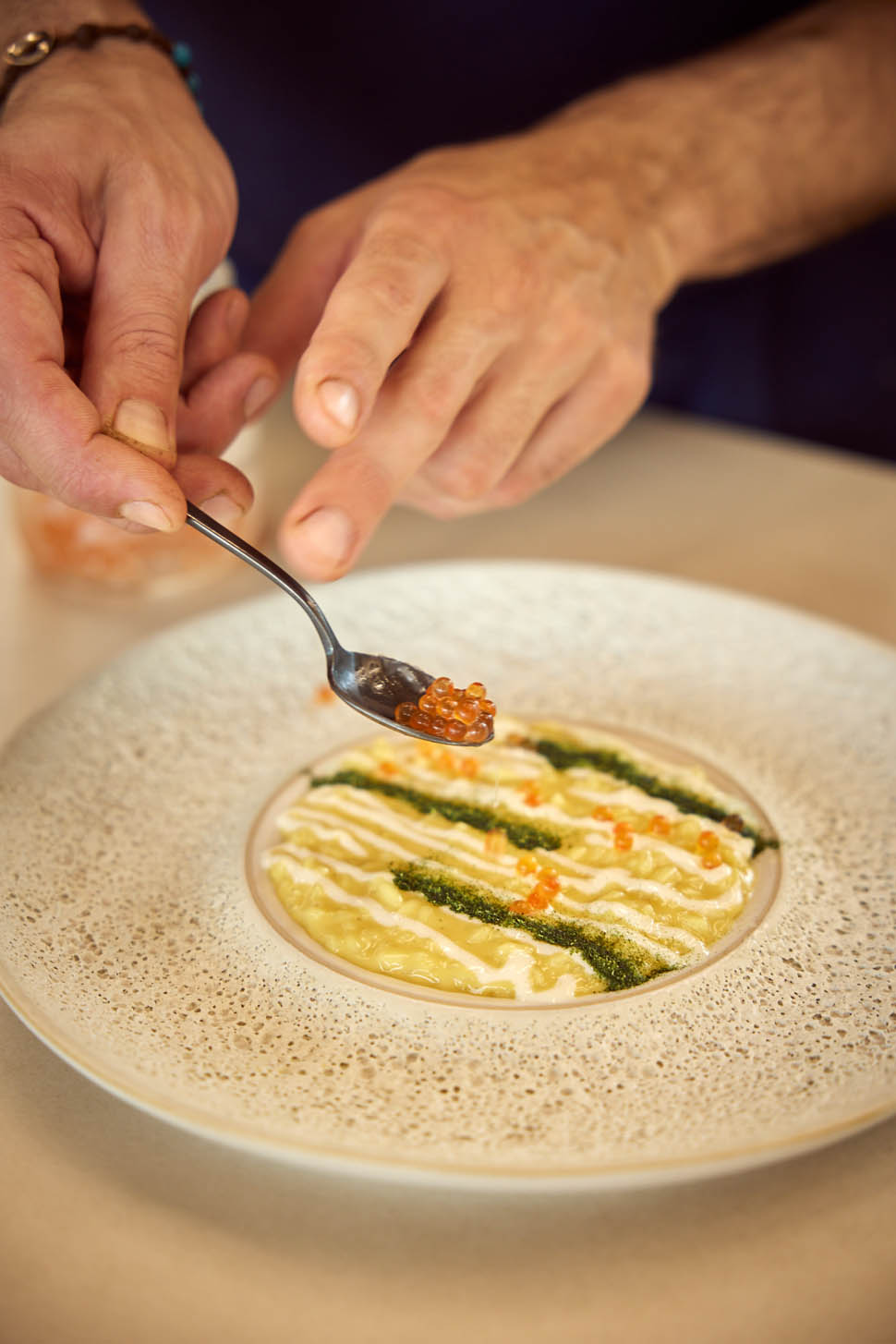
On the island of Vulcano, one of the Aeolian Islands in a landscape of absolute beauty, stands the Therasia Resort Sea & Spa, an elegant five-star hotel overlooking the sea. The gastronomic offering here is significant, and among the various restaurants is I Tenerumi, with an incredible view of the entire archipelago, including Alicudi and Filicudi in the distance, Lipari and its sea stacks that seem almost touchable, Salina, with Panarea and Stromboli in the background. Here, Davide Guidara, a Campanian chef, with his great talent and extensive study, creates a cuisine entirely connected to the vegetable element, where every ingredient is highlighted in any possible nuance, with a range of surprising taste expressions.
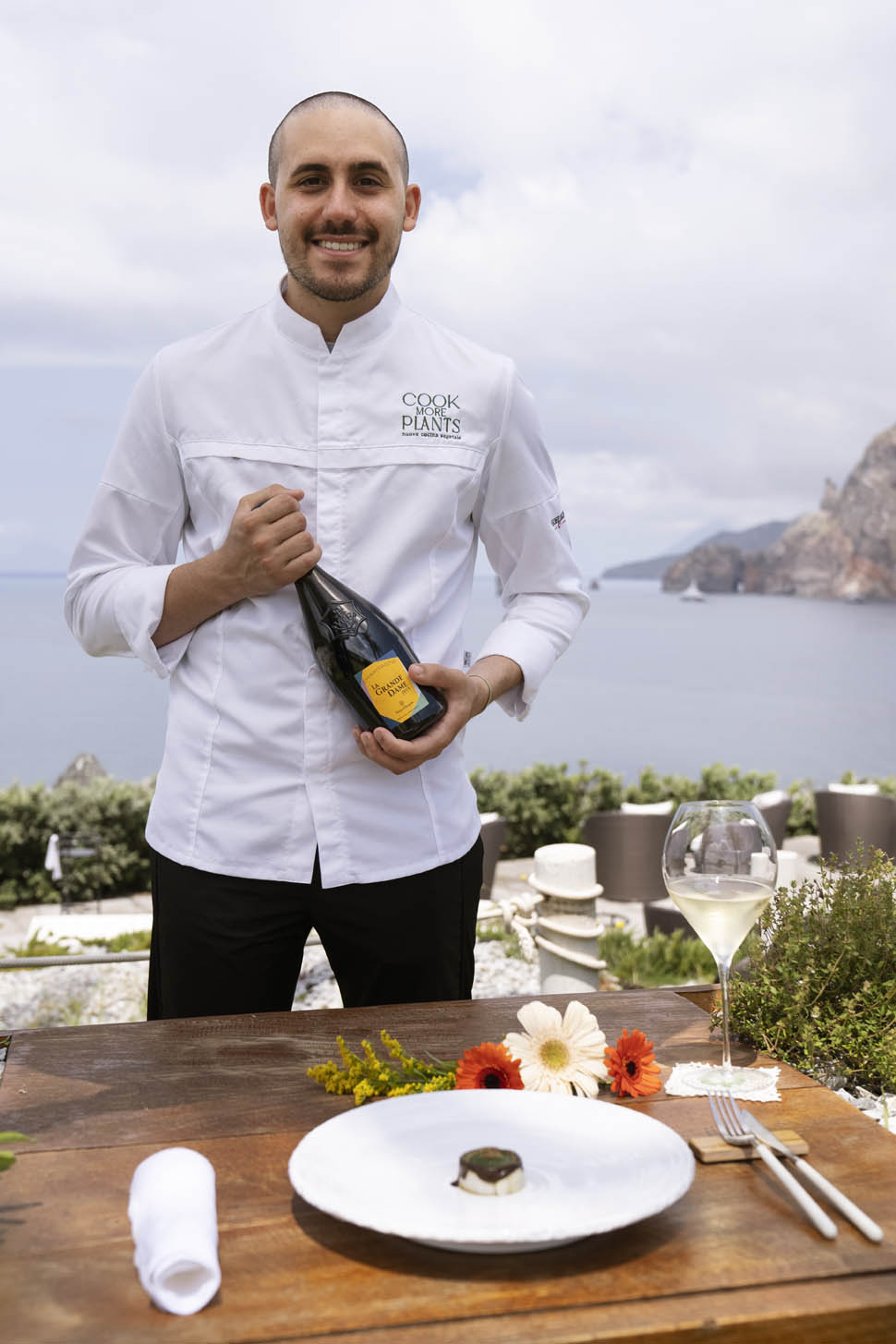
This is evident in the dish paired with La Grande Dame 2015, "zucchine alla scapece," with zucchini marinated in its juice, scapece mayonnaise, and black garlic dressing. Fragrant and with an unmistakable taste, "zucchine alla scapece" is a great Italian classic. Its delicate flavor is intensified by the marination and the fresh touch of mint. A sunny dish, just like La Grande Dame 2015, a fresh and mineral pairing that emphasizes the taste of vegetables and the elegance of the Champagne.
CREAMY TROUT FUND RISOTTO WITH CRÈME FRAÎCHE AND NETTLES
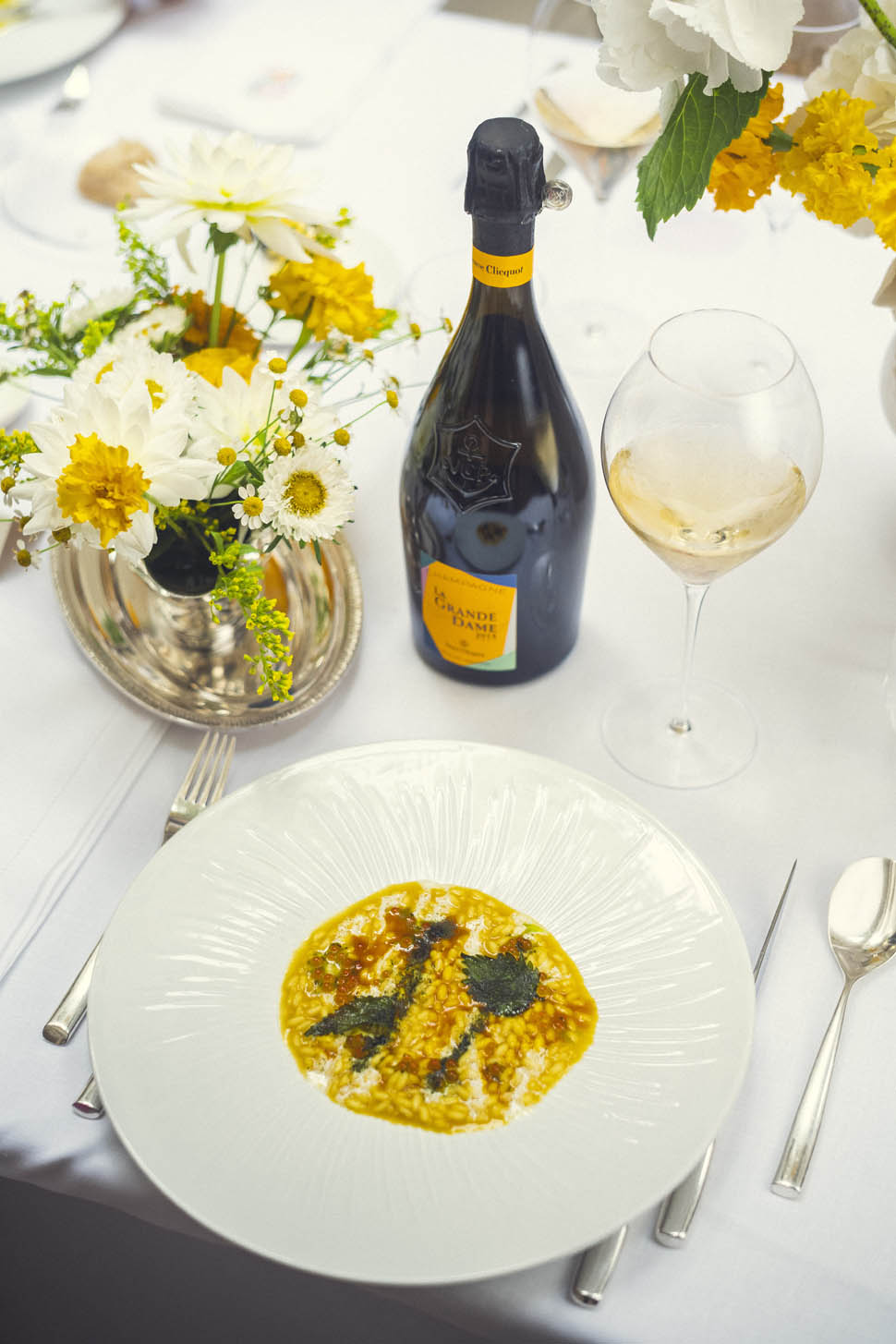
Ingredients
- 200g of rice
- 3kg of trout scraps
- 50g of lemongrass
- 200g of carrots
- 150g of celery
- 500g of onion
- 200g of shallots
- 5g of saffron
- 500g of nettles
- 50g of trout eggs
- Rosemary
- Leek
- Spring onion
- Sage
- Thyme
- Marjoram
- Trout fat
- 200g of cream
- 5g of buttermilk
- 250g of butter
- 100g of Parmesan cheese
Method
For the crème fraîche, mix cream and buttermilk; let it rest at 27 degrees for 48 hours, covered with a breathable cloth.
Proceed with making the trout broth: heavily toast the fish bones, start with a light sauté of celery, onion, shallots, leeks, and carrots, and add the previously degreased scraps while keeping the fat aside. Deglaze with Noilly Prat, cover with water, and let it simmer for 3 hours. Once the fire is off, let the mass settle, and filter everything with cheesecloth, reducing the broth to reach a dense consistency. Add saffron and lemongrass infusion.
For the nettles, osmotize the tips with oil and vinegar; the larger leaves should be blanched and dried.
Next, prepare the fat to dress the trout eggs: grill rosemary, green part of leek, spring onion, sage, thyme, and marjoram on embers. Once infused with the smoky flavor, place the fat and aromatic herbs in a pot, then pasteurize the pot at 80 degrees for 15 minutes
Dish composition
For the risotto, toast the rice directly in a saucepan, mix and bring to a temperature of about 60 degrees. Pour directly with hot water, lightly salt, and, at the ninth minute of cooking, start adding the trout broth.
Bring to cook and cream with butter and Parmesan.
SCAPECE's ZUCCHINI
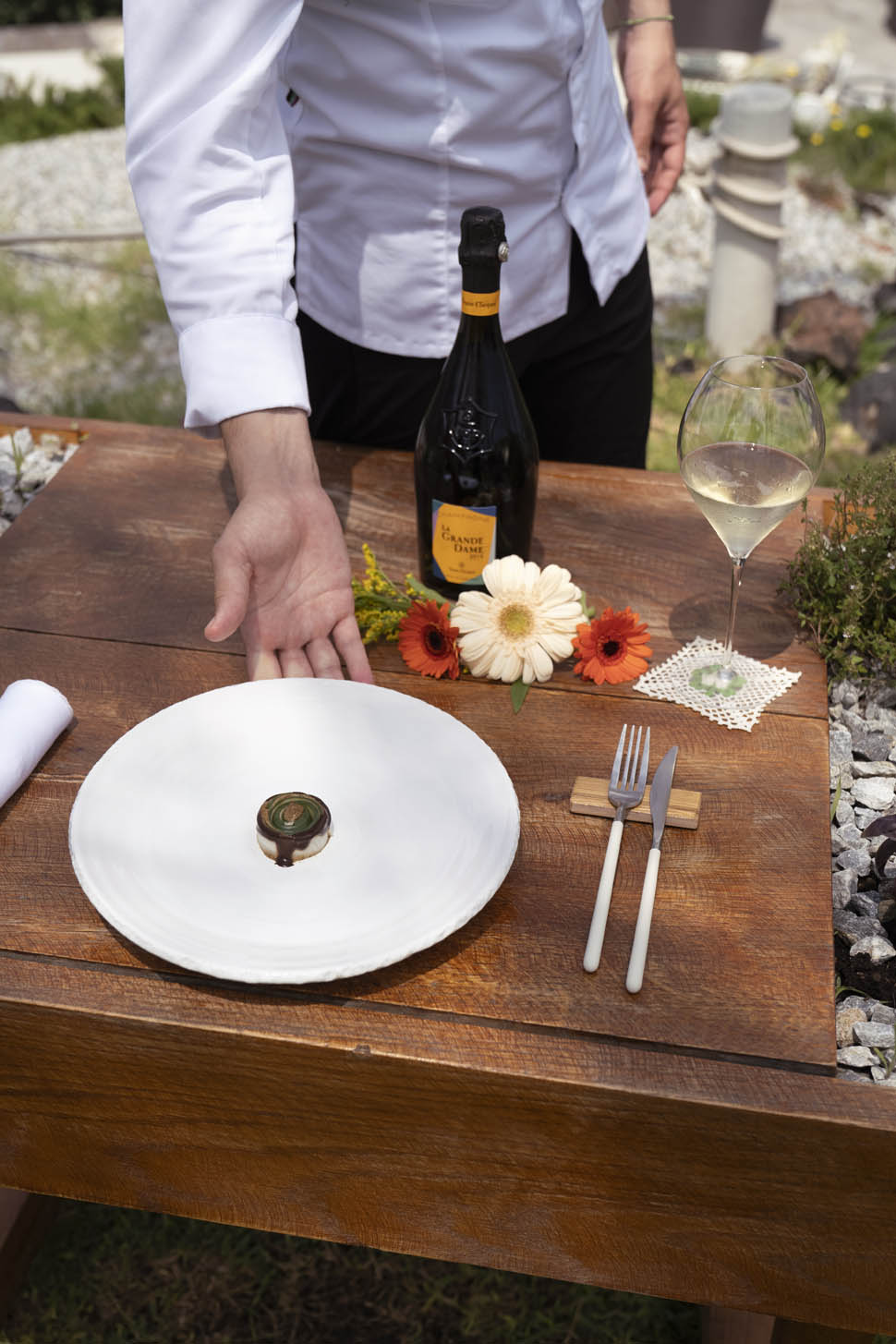
For the zucchini sheets
- Zucchini as needed
- 200g of zucchini extraction
- 4g of salt
- 3g of mint
- Oil
- 15g of garlic
Method
Steam the whole zucchini and let them cool. Cut the zucchini into thin slices and marinate them for 12 hours with the rest of the ingredients.
After 12 hours, steam the vegetables at 85°C for 5 minutes.
For the escapece mayo
- 350g of Zucchini fried in slices
- 400g of Broth/Water
- 10g of Balsamic Vinegar
- 12g of Salt
- 10g of mint
Method
Blend everything together and put it in a piping bag.
For the black garlic cream
- 15g of black garlic
- 50g of oil
- 15g of white wine vinegar
Method
Blend everything together and store.
Dish composition
Remove the central part of the zucchini, where the seeds are present, spread on a table, and season with escapece mayonnaise, roll, and serve with black garlic cream.
